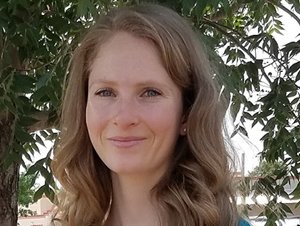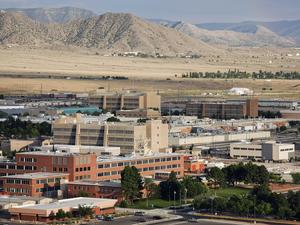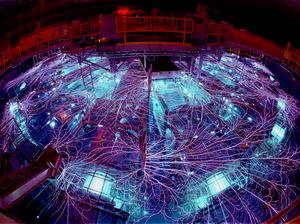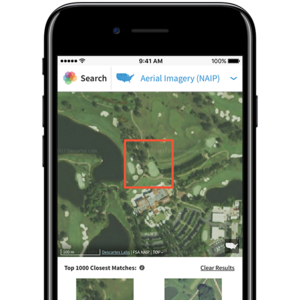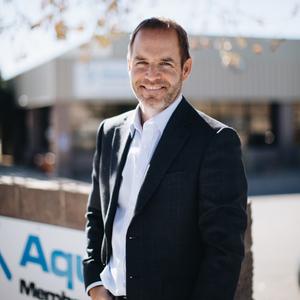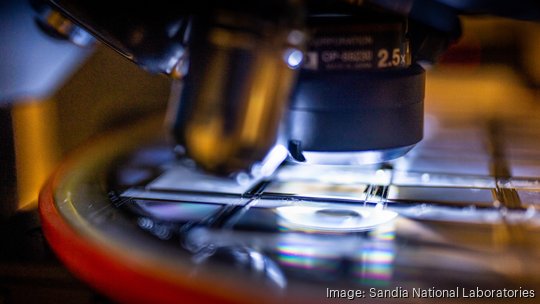
Leaving a position to start your own company can be a risky endeavor. Especially when that position was with one of the country's largest national laboratories.
But a pair of scientists from Sandia National Laboratories took that leap just over a year ago and are now ramping up efforts to commercialize a high-speed camera technology they helped invent at the Albuquerque lab.
Marcos Sanchez and Liam Claus are co-founders of Albuquerque-based startup Advanced hCMOS Systems. They both left Sandia National Laboratories in early 2022 to launch the company alongside Matthew Dayton, another co-founder who joined the pair from California's Lawrence Livermore National Laboratory.
A Sandia National Laboratories tech transfer program granted Sanchez and Claus leave from the labs, with the promise of reinstatement if they choose to return within two years. Those two, alongside Dayton, have experience developing a type of ultrafast X-ray imaging camera using hybrid complementary metal oxide semiconductor sensors — hCMOS for short. That's where the company gets its name.
The labs issued its first commercial license for the ultrafast camera to Advanced hCMOS Systems last summer, according to a March 13 release from Sandia National Laboratories. Those cameras are "orders of magnitude" faster than Phantom Cameras, a different type of commercial high-speed camera used in combustion or automotive crash test applications, said Claus, who worked at Sandia for 14 years before becoming one of Advanced hCMOS Systems' co-founders.
While Advanced hCMOS Systems is currently focused in two areas — engineering services and circuit design for clients — Claus said that the startup wants to use licensed Sandia patents to develop its own hCMOS sensor design. It's received a chunk of Small Business Innovation Research money to do that, he added.
And, Advanced hCMOS Systems recently began a yearlong collaboration project with Sandia to help redesign the hCMOS sensors for new applications, according to the release from the labs. Money for that collaboration comes from a New Mexico program called the TRGR Technology Readiness Initiative.
That initiative, a collaboration between the state of New Mexico, Los Alamos National Laboratory and Sandia National Laboratories, provides money to companies to help accelerate tech commercialization. Any New Mexico business can apply to the readiness initiative for to get funding or research assistance.
Receiving money and support through the TRGR initiative has helped Advanced hCMOS Systems "leap forward" to the next generation of sensors, Claus told Albuquerque Business First.
And the collaboration has boosted research and development at Sandia, too.
"We've been testing our old devices in this new mode of operation and were able to demonstrate that they do actually exhibit gain in the right region that we're looking for in this project," Rex Kay, an engineer at Sandia leading the collaboration, said in the release about testing conducted as part of the collaboration.
Commercializing its own line of products could be a little way out, said Sanchez, a co-founder who was at Sandia for 13 years. But Advanced hCMOS has already seen some traction, bringing on its first employee — Andy Montoya, another scientist from Sandia who has worked in hCMOS sensor design — in August 2022.
Tony Colombo, Sandia's manager over camera production, oversaw much of Claus, Sanchez and Montoya's research at Sandia. He told Business First that the demand for these types of ultrafast imagining cameras "grew geometrically" in the late 2010s as government facilities needed more of the cameras for different capabilities.
Advanced hCMOS Systems wants to meet that government demand and eventually, once it owns its own sensor device, break into the commercial market. Research into certain materials, like the Gorilla Glass used in iPhones, is one potential application for the type of ultrafast camera the Albuquerque startup is working on commercializing.
"All of us believe in this mission," Sanchez said.
